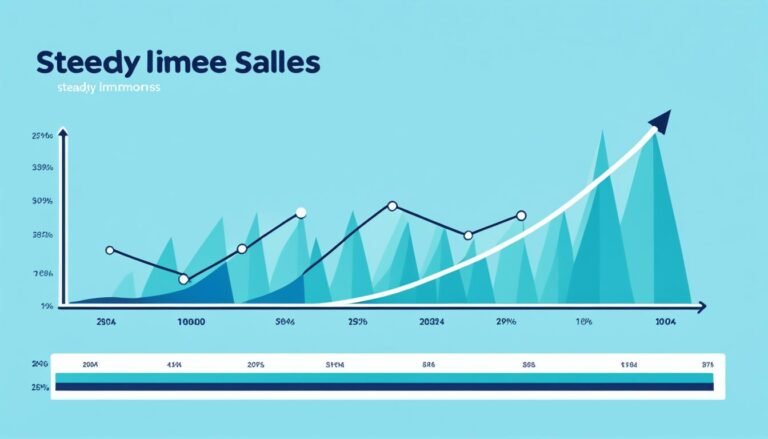Unlocking Success: Harnessing the Potential of Marketing Management Analytics
Why Marketing Analytics Matters
In a world where data is king, getting a grip on marketing analytics is a game-changer for any business looking to succeed. Let’s break down why it’s so important and how it can supercharge your marketing efforts.
Making Smart Decisions
Marketing analytics is like having a crystal ball for your business. It helps you make smart decisions by using data to see what’s working and what’s not. According to Coursera, most businesses use data to make better choices. This means you can understand what your customers really want, tweak your marketing strategies on the fly, and even predict how future campaigns will do.
With marketing analytics, you can see how customers are interacting with your brand across different platforms, like social media and your website. This helps you figure out which marketing tactics are hitting the mark and which ones need to go. Research shows that 53% of marketing decisions are driven by analytics, and 75% of marketers think its importance will keep growing (OWOX).
| What You Learn from Marketing Analytics | Why It Matters |
|---|---|
| Customer preferences | Better marketing strategies |
| Campaign performance | Smarter resource use |
| Future campaign success | Improved planning |
Boosting Marketing Efficiency
Good marketing analytics can make your marketing efforts way more efficient. Marketing managers need to gather the right data to understand what customers want, which leads to better decisions about pricing, marketing policies, and goals (Improvado).
Using data to guide your marketing strategies means you can nail the marketing mix—product, placement, price, and promotion. This ensures your products or services are in demand, priced right, and promoted through the best channels.
Marketing analytics also helps different departments work together by creating a common language based on data. This saves time, automates report creation, and helps generate effective reports for quick decision-making. Marketing managers can then make fast adjustments to campaigns and strategies, boosting efficiency (OWOX).
| Perks of Marketing Analytics | What You Get |
|---|---|
| Better understanding of customer needs | Happier customers |
| Improved decision-making | More effective marketing |
| Time savings through automation | Smoother operations |
By weaving marketing analytics into your strategy, you can uncover valuable insights and steer your marketing efforts towards success. For more on tools that can help, check out our guide on marketing analytics tools.
Making the Most of Sales Data
Sales data isn’t just numbers on a spreadsheet; it’s a goldmine for boosting your marketing game. By diving into this data, businesses can make smarter decisions, streamline sales, and build stronger bonds with customers.
Boosting Sales Processes
Using sales data can seriously up your sales game. It helps you nail down forecasts, spot hiccups in your sales flow, and connect better with both new leads and loyal customers. With these insights, your team can work smarter, not harder, and make the most of your resources.
Here’s a quick look at how sales data can make a difference:
| What to Improve | Why It Matters |
|---|---|
| Sales Forecasting | Better predictions mean better planning. |
| Spotting Bottlenecks | Fix issues fast to keep things moving. |
| Lead Management | Better follow-ups mean more conversions. |
| Resource Allocation | Use your marketing budget where it counts. |
These tweaks can make your sales process smoother and boost your bottom line. Want to know more about the tools that can help? Check out our article on marketing analytics tools.
Building Better Customer Relationships
Sales data isn’t just for sales; it can also help you get to know your customers better. By understanding what they like and how they behave, you can tailor your marketing to fit their needs. This kind of personalization builds trust and keeps customers coming back.
Marketing analytics lets you track how people interact with your content, spot trends, and see how well your social media and website are doing. Here’s a look at some key metrics:
| Metric | Why It Matters |
|---|---|
| Customer Engagement | See how people are interacting with your content. |
| Lead Conversion Rate | Measure how well your follow-ups are working. |
| Customer Retention Rate | Check how loyal and satisfied your customers are. |
| Net Promoter Score (NPS) | Find out how likely customers are to recommend you. |
By tweaking your marketing strategies based on this data, you can keep your customers happy and loyal. For more tips on understanding customer behavior, take a look at our article on customer segmentation analysis.
With these strategies, you can turn sales data into a powerful tool for better marketing and stronger customer relationships.
Making the Most of Customer Data Platforms
Customer Data Platforms (CDPs) are game-changers in marketing. They pull together data from all over the place, giving marketers a clear picture of their customers. This is key for making smart decisions and hitting the mark with marketing campaigns.
Bringing All Your Data Together
CDPs and Customer Relationship Management (CRM) systems are like the ultimate organizers for your data. They gather info from different sources to create a detailed profile for each customer. This helps marketers get a grip on what customers like and how they behave, making it easier to come up with winning marketing strategies. By keeping all this data in one place, businesses can really step up their game in engaging with customers.
| Data Source | What It Tracks |
|---|---|
| Website Interactions | What users do on your site |
| Social Media | How people engage on social platforms |
| Email Campaigns | How folks respond to your emails |
| Purchase History | What people have bought before |
With all this info in one spot, marketers can create spot-on content and nail customer segmentation. This unified approach gives businesses the edge to tweak their strategies on the fly (Improvado).
Smart Segmentation
Breaking down customers into groups based on their actions, likes, and backgrounds is a must for sharp marketing. Using insights from your unified data, you can craft marketing plans that hit home with different customer groups.
Here are some ways to slice and dice your customer data:
| Segmentation Criteria | What It Means |
|---|---|
| Demographic | Age, gender, income, etc. |
| Behavioral | Buying habits and usage |
| Psychographic | Lifestyle, interests, and values |
| Geographic | Location and regional quirks |
These strategies help predict what customers might do next, letting you tailor your campaigns just right. Using advanced models like predictive analytics can take this to the next level by forecasting customer moves.
By making the most of CDPs to gather data and using smart segmentation, marketers can get a better handle on customer trends and behaviors. This leads to better marketing results and happier customers. For more tools that can help, check out our list of marketing analytics tools.
Competitive Analysis
Competitive analysis is a big deal in marketing. It helps businesses figure out who their main rivals are and come up with smart ways to stand out. This process gives marketers and business owners a clear picture of the competition, so they can position their products or services in the best way possible.
Spotting the Competition
By analyzing competitors, companies can see who their main rivals are and what they’re up to. This info acts like a yardstick for growth, helping businesses use their resources wisely to take over the market. Knowing who the competition is and what they’re doing is key for creating marketing tactics that hit home with customers.
| Competitor | Market Share (%) | Main Strategy |
|---|---|---|
| Company A | 25 | Low-cost provider |
| Company B | 20 | Quality differentiation |
| Company C | 15 | Niche marketing |
| Company D | 10 | Aggressive digital marketing |
This table shows how businesses can break down their competitors’ market shares and strategies to shape their own marketing plans.
Smart Marketing Moves
Understanding what competitors are doing lets businesses tweak and improve their marketing efforts. Marketing analytics is a big part of decision-making, with 53% of marketing choices driven by these insights, according to Gartner. As the marketing analytics market grows, with a projected 19.5% increase between 2023-2032, businesses should invest in analytics tools and strategies to stay ahead (OWOX).
Effective marketing strategies can include:
- Benchmarking against competitors to find areas for improvement
- Adapting successful tactics used by market leaders
- Creating unique value propositions that make the business stand out
By using marketing analytics, businesses can easily collaborate with other departments, automate reports, and quickly tweak marketing campaigns. This team effort builds a data-driven culture that’s crucial for growth in today’s competitive market (OWOX).
For more tips on tools that can boost your marketing management analytics, check out our article on marketing analytics tools and how they can help with strategic decision-making.
Cracking the Code of Marketing Analytics
Marketing analytics is like a treasure map for business owners and marketers. It reveals hidden insights that can make or break your campaigns. By digging into the data, you can make smart decisions and tweak your strategies for maximum impact.
How to Know If Your Campaigns Are Hitting the Mark
You can’t just throw spaghetti at the wall and hope it sticks. You need to know what’s working and what isn’t. That’s where tracking comes in. Marketing analytics helps you gather and crunch the numbers to see if your efforts are paying off. Some of the key things to keep an eye on are page views, conversion rates, email open rates, and social media engagement (Coursera).
Here’s a quick rundown of some important metrics and why they matter:
| Metric | Why It Matters |
|---|---|
| Page Views | Shows how many people are checking out your content |
| Conversion Rate | Tells you how many visitors are taking the action you want |
| Email Open Rates | Indicates how many people are interested in your emails |
| Social Media Engagement | Measures how much people are interacting with your posts |
A study by Google and MIT found that 89% of top marketers use big-picture metrics like gross revenue, market share, or customer lifetime value (CLV) to gauge how well their campaigns are doing (Wrike). This shows just how important it is to keep track of the right numbers.
The Metrics That Matter
Knowing your key metrics is like having a compass in the marketing wilderness. These numbers help you see how your marketing plans are doing over time. They give you a clear picture of how your efforts are helping your business grow (Planful).
There are three main types of marketing analytics models:
- Descriptive Models: These look at past data to help you make decisions.
- Predictive Models: These use data to forecast customer behavior and trends.
- Prescriptive Models: These take data from all your interactions to create better customer experiences (Coursera).
Using these models, you can get a full view of your marketing activities, fine-tune your strategies on the fly, and predict how future campaigns will do. This takes the guesswork out of marketing and helps you manage customer relationships better. For more on the tools you can use, check out our article on marketing analytics tools. Also, diving into digital marketing analytics and customer segmentation analysis can give you even more insights and help you get better results.
Must-Have Marketing Analytics Tools
When it comes to marketing, having the right tools can make all the difference. Whether you’re a marketer, business owner, or marketing manager, these tools help you make sense of data, fine-tune campaigns, and boost your business.
Google Analytics
Google Analytics is like the Swiss Army knife of analytics tools. It’s free and packed with features to help you figure out where your website traffic is coming from and what visitors are doing once they get there.
| Feature | What It Does |
|---|---|
| Website Traffic Tracking | See where your visitors are coming from (e.g., search engines, social media) |
| Conversion Goals | Set and track goals to measure success |
| Campaign Effectiveness | Check how well your marketing campaigns are performing |
Google Analytics is a must-have for anyone looking to get a better grip on user behavior and tweak their strategies for better results. Want to know more? Check out our section on marketing analytics tools.
HubSpot
HubSpot is your go-to for growing traffic, converting visitors, and managing inbound marketing campaigns. It’s an all-in-one platform that combines marketing, sales, and customer service tools.
| Feature | What It Does |
|---|---|
| Traffic Growth | Tools to boost your website’s visibility and attract more visitors |
| Visitor Conversion | Convert those visitors into leads with ease |
| Inbound Marketing | Run complete inbound marketing campaigns from start to finish |
HubSpot’s easy-to-use interface and powerful features make it a favorite for marketers looking to streamline their efforts and get better results.
Salesforce
Salesforce is the big dog when it comes to managing customer relationships. It’s not just for marketing; it’s also a powerhouse for sales, commerce, and service teams.
| Feature | What It Does |
|---|---|
| Customer Relationship Management | Keep all your customer data and interactions in one place |
| Cross-Department Insights | Share information across marketing, sales, and service teams |
| Analytics and Reporting | Dive deep into analytics to see how engaged your customers are and how well your campaigns are doing |
Salesforce helps businesses use data to make smarter decisions and improve their marketing strategies.
These tools — Google Analytics, HubSpot, and Salesforce — are essential for anyone looking to make the most out of their data. Each one offers unique features that help you analyze and plan your marketing efforts. For more tips on customer analysis, check out our guides on customer segmentation analysis and customer lifetime value analysis.






